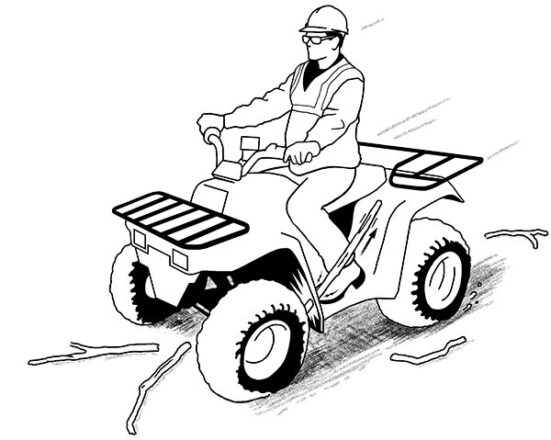Deer: Scourge of the Eastern Forest (and Roadways)?

The U.S. white-tailed deer population has ballooned to an estimated 30 million in number. Thirty million! These overabundant “soft-eyed nibblers,” as my old wildlife management professor called them, are hindering the regeneration of desirable hardwood species in the eastern U.S., spreading disease-carrying ticks, and causing about 1.5 million vehicle collisions and 10,000 crash-related injuries every year.
My home in Virginia’s Blue Ridge Mountains is surrounded by miles of woods. Deer browse lines are evident everywhere. Anything in our yard not protected by deer fencing is food to the nibblers, with progressively distasteful (to them) plants being browsed as the winter progresses and their hunger burns.

What can we do to remedy the deer problem?
Deer hunting (including expanding the season and increasing the per-hunter quota) helps, but deer are prolific breeders and usually easily overcome the typical fall and winter deer harvest. Some forest owners in Pennsylvania who are willing to incur the expense of fencing off an entire area with eight-foot-high (sometimes electric) fencing have successfully excluded deer long enough to facilitate desirable tree regeneration following harvests. The two northwest Pennsylvania photos below show: (Figure 2) an area that was harvested (partial cut) several years ago with no deer fencing and (Figure 3) an adjacent area with fencing installed well before harvest and kept in place for several years afterward. The difference is dramatic.


The tick problem, and the role of deer in the spread, is now regularly in the news. Many internet-based articles give advice on prevention, diagnosis, and treatment of tick bites and tick-borne diseases. FRA has produced Technical Releases on these subjects over the years. (See FRA Technical Releases 07-R-35, 11-R-15, and 19-R-19, and this Woods to Mill blog on Powassan and Other Tick-Borne Diseases.)
What about the problem of vehicle collisions with deer? Many FRA members can share their own deer-collision incidents. Here are just a few of the many pieces of advice on dealing with deer while driving. (A simple internet search on this topic turns up a wealth of information. See this link or this link, for example.)
- Keep your eyes moving and scan the tree line often while driving through forested areas.
- Know the areas where deer are frequently seen, and increase your level of alertness, especially at dusk, dawn, and night.
- If you see one deer crossing or about to cross the road, expect that there are others still in the woods who will follow!
- Slow down in a safe manner if they are visible. Be very hesitant to slam on your brakes and do not swerve suddenly; you may lose vehicle control and/or cause following or oncoming vehicles to crash, too.
- Follow other vehicles at a safe distance. They may be slowing down for deer!
- Try honking the horn loudly when deer are on or next to the road. The sound often prompts them to move across or away.
- At night, look for the reflections of deer eyes in your headlights. Be aware that the headlights shining directly into their eyes can make them freeze up.
- Always wear seatbelts and reduce speed after dark in areas where deer are likely.
- If a collision with a deer is imminent, maintain control of your vehicle by continuing a straight steering path. If you have applied the brakes, releasing them just before impact may more readily push the deer to the side of the vehicle.
I rank the deer overpopulation problem as one of the top threats to the future eastern hardwood forest and to the safety of all drivers. We need to keep this issue in mind as we communicate with state policymakers.


